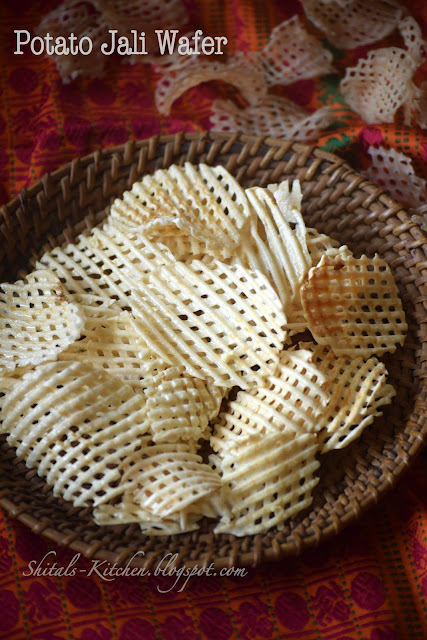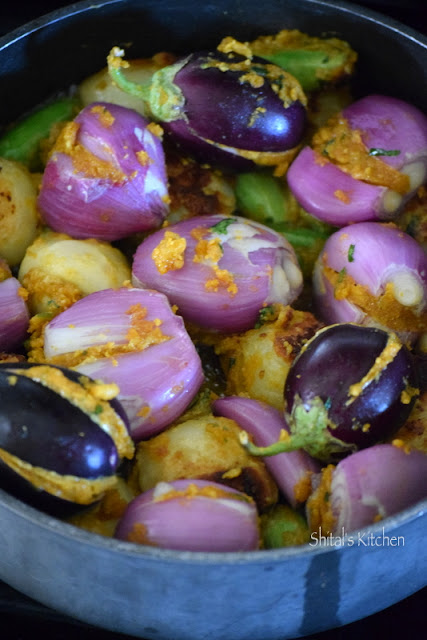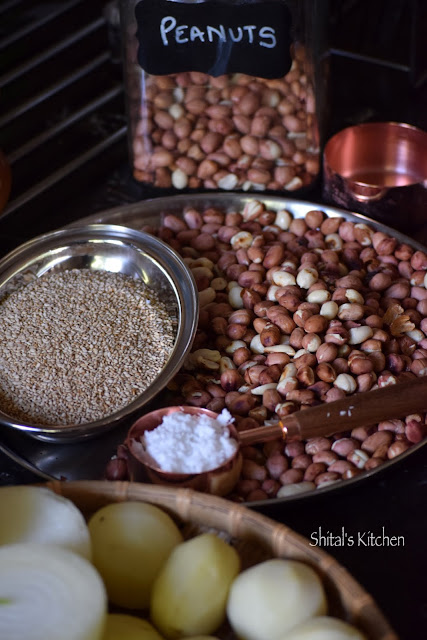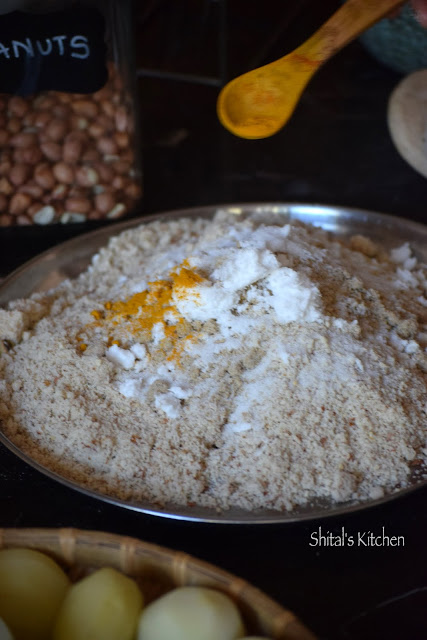Summer time, schools closed, and nostalgic moments. As kids we used to help mom in making dehydrated snacks and pickles. More than helping, it was a chance to taste/eat stuff that is being dried in the hot sun. Half dried potato wafers and chakli, half dried sabudana papad, and drying salted raw mangoes for pickling were all just so delicious. We would be on duty to shuuuu away crows and birds as they would peck on drying food. How I remember those amazing childhood days!!!
I still keep up the tradition and learn and make all the recipes that I have ever enjoyed as a child. These traditional/family recipes are to be treasured for the future generations. All these dehydrated snacks/fryums are fun to eat. Living away from India, it is not always possible to bring our favorite food. So since past few years we have been taking advantage of hot California summer to dehydrate veggies and also make dehydrated snacks to store for the entire year. Just like last summer, this summer too I had great response on dehydrated snack orders. With my mom being here, we both could make lot of chakli, papad, and sev for orders that we received. We are very happy to receive positive feedback on them.
When we made the first batch of sabudana papad which is usually made on a plastic/polythene sheet, my husband was not very happy. He wanted me to create a recipe without using plastic. Most people avoid plastic, and specially in this case, plastic sheet would have to remain in hot sun while papad would dry and hazardous chemicals that would be released. I then tried on aluminum sheets, which did not work as I did not grease the surface. They were difficult to peal off from a non greasy surface. One afternoon, it was an Eureka moment for me :) I called my husband who was at work, and told him that I had found a non-toxic/safe way to make sabudana papad and would be able to take orders to supply good safe products to the community. Yes, I used food safe silicon mats to dehydrate sabudana mixture and make papads... the ones that can be used for high baking temperatures!
Check out other dehydrated recipes:
I still keep up the tradition and learn and make all the recipes that I have ever enjoyed as a child. These traditional/family recipes are to be treasured for the future generations. All these dehydrated snacks/fryums are fun to eat. Living away from India, it is not always possible to bring our favorite food. So since past few years we have been taking advantage of hot California summer to dehydrate veggies and also make dehydrated snacks to store for the entire year. Just like last summer, this summer too I had great response on dehydrated snack orders. With my mom being here, we both could make lot of chakli, papad, and sev for orders that we received. We are very happy to receive positive feedback on them.
When we made the first batch of sabudana papad which is usually made on a plastic/polythene sheet, my husband was not very happy. He wanted me to create a recipe without using plastic. Most people avoid plastic, and specially in this case, plastic sheet would have to remain in hot sun while papad would dry and hazardous chemicals that would be released. I then tried on aluminum sheets, which did not work as I did not grease the surface. They were difficult to peal off from a non greasy surface. One afternoon, it was an Eureka moment for me :) I called my husband who was at work, and told him that I had found a non-toxic/safe way to make sabudana papad and would be able to take orders to supply good safe products to the community. Yes, I used food safe silicon mats to dehydrate sabudana mixture and make papads... the ones that can be used for high baking temperatures!
Check out other dehydrated recipes:
Ingredients to make sabudana papad to store for the entire year.
2 cups sabudana
1+1/2 tsp. salt
1 tbsp. cumin seeds
2 tbsp. ginger and green chili paste
Soak 2 cups of sabudana in 2 cups of water overnight or 4-5 hours till they are fluffy.
Remove in a large container and add 8 cups of water. Add salt and on medium heat bring the mixture to boil. Once it starts to boil, simmer for 10 minutes stirring occasionally so that it attains a good syrupy consistency and develops starch and turns translucent.
Turn off the heat and let the mixture cool.
On cooling the mixture will thicken and sabudana will turn transparent.
While still slightly warm, add cumin seeds and ginger and green chili paste.
Mix well.
On a silicon mat or heat resistant surface pour a spoonful of mixture. Let the papad dry completely under hot sun. May take 1-3 days depending on the heat. Flip and dry if needed.
When dry, store in clean, dry container.
Fry in hot oil and sprinkle chili powder and chaat masala as per your taste.
Enjoy!
Here is step-by-step pictorial recipe:
Soak 2 cups of sabudana in 2 cups of water overnight or 4-5 hours till they are fluffy.
Remove in a large container and add 8 cups of water. Add salt and on
medium heat bring the mixture to boil. Once it starts to boil simmer for
10 minutes so that it attains a good syrupy consistency and develops
starch and turns translucent.
Turn off the heat and let the mixture cool.
On cooling, the mixture will thicken and sabudana will turn transparent.
While still slightly warm, add cumin seeds and ginger and green chili paste.
Mix well.
On a silicon mat or heat resistant surface pour
a spoonful of mixture. Let the papad dry completely under hot sun. May
take 1-3 days depending on the heat. Flip and dry if needed.
When dry, store in clean, dry container.
When dry, store in clean, dry container.
Fry in hot oil and sprinkle chili powder and chaat masala as per your taste.
Enjoy these FRYUMS!!!



































































